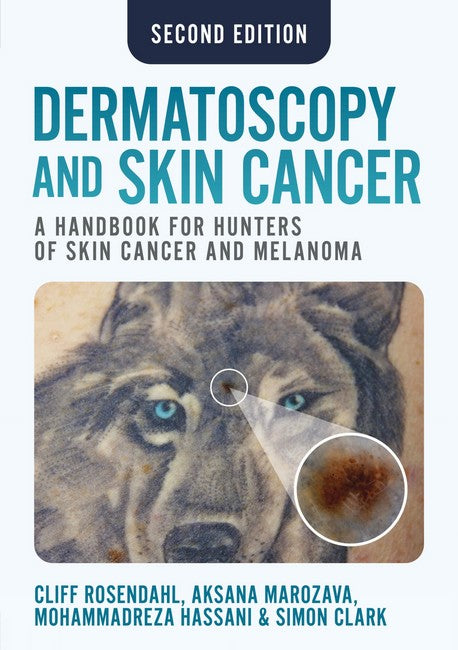Description
Preface to the second edition; Foreword; Abbreviations
Chapter 1: Introduction to dermatoscopy
1.1 Why use a dermatoscope?
1.2 What is a dermatoscope?
1.3 Colours in dermatoscopy
1.4 Differences between polarised and non-polarised dermatoscopy
1.5 Uses of dermatoscopy for conditions other than tumours
Chapter 2: Skin - the organ
2.1 Skin as an organ
2.2 Embryology of skin
2.3 The microanatomy of skin
Chapter 3: Dermatopathology for dermatoscopists
3.1 Introduction
3.2 Tissue and context: the two pillars of reliable skin cancer diagnosis
3.3 From the scalpel to the microscope: the specimen journey
3.4 The histology of normal skin
3.5 Core dermatopathology terminology
3.6 Neoplastic lesions: dermatoscopic-histological correlation
3.7 Clinicopathological collaboration in skin cancer diagnosis
Chapter 4: The language of dermatoscopy: naming and defining structures and patterns
4.1 The evolution of terminology for dermatoscopic structures and patterns
4.2 Revised pattern analysis of lesions pigmented by melanin
4.3 Patterns in revised pattern analysis
4.4 The process of revised pattern analysis
4.5 Revised pattern analysis applied to lesions with white structures
4.6 Revised pattern analysis applied to lesions with orange, yellow and skin-coloured structures
4.7 Revised pattern analysis - a diagnostic algorithm
4.8 An aide-memoire for revised pattern analysis of pigmented skin lesions
4.9 Revised pattern analysis applied to vessel structure and patterns
4.10 The cognition of dermatoscopy
Chapter 5: The skin examination
5.1 The skin check consultation
5.2 Photo-documentation
5.3 Patient safety: tracking specimens and self-audit
5.4 The lives of lesions
Chapter 6: Chaos, Clues and Exceptions: a decision algorithm for pigmented skin lesions
6.1 Chaos, Clues and Exceptions
6.2 Chaos
6.3 Clues
6.4 Exceptions
Chapter 7: Prediction without Pigment: an algorithm for non-pigmented skin lesions
7.1 Prediction without Pigment
7.2 Prediction without Pigment: Part 1
7.3 Prediction without Pigment: Part 2
7.4 Conclusion
Chapter 8: Melanoma
8.1 What is a melanoma?
8.2 Melanoma subtypes
8.3 Melanomas with adverse outcomes
8.4 Metastatic melanoma
Chapter 9: Melanocytic naevi
9.1 Melanocytic naevi, pigmented and non-pigmented
9.2 Dysplastic naevus
Chapter 10: Basal cell carcinoma, benign and malignant keratinocytic lesions, distinguishing flat pigmented facial lesions, dermatofibroma, vascular and other lesions
10.1 Basal cell carcinoma: pigmented and non-pigmented
10.2 Benign keratinocytic lesions
10.3 Actinic keratosis and squamous cell carcinoma in situ
10.4 Squamous cell carcinoma and keratoacanthoma
10.5 Distinguishing flat pigmented facial lesions
10.6 Dermatofibroma and dermatofibrosarcoma protuberans
10.7 Haemangioma and other vascular lesions
10.8 Merkel cell carcinoma
10.9 Atypical fibroxanthoma
10.10 Adnexal tumours
10.11 Neurofibroma
10.12 Molluscum contagiosum
10.13 Cutaneous lymphoma
10.14 Kaposi sarcoma
Chapter 11: Photographic technology as a diagnostic tool in melanoma management
11.1 Utilisation of photographic technology in skin lesion diagnostics
11.2 Serial digital dermatoscopic imaging
11.2.1 Serial digital dermatoscopic imaging - targeted and random
11.2.2 Selection by serial digital dermatoscopic imaging - a promising alternative to random lesion selection (SDDI - TBPD)
11.2.3 Serial digital dermatoscopic imaging - which lesions should be excised?
11.3 Total body photography
11.3.1 Total body photography used as a baseline during skin examination
11.3.2 Serial total body photography with detection software
Index

